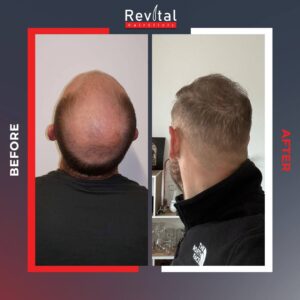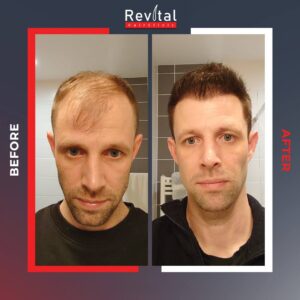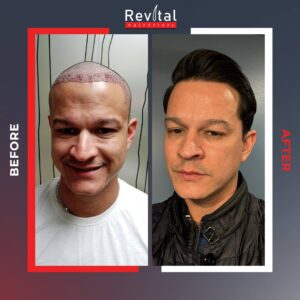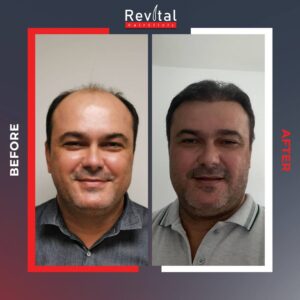Beard Transplant: Everything You Need to Know
For many men, a full, thick beard is a symbol of masculinity, style, and confidence. However, not all men are naturally able to grow a beard that meets their aesthetic goals. Whether due to genetics, injury, or medical conditions, some men struggle with patchy or absent facial hair. Fortunately, beard transplantation offers a permanent solution to these concerns.
In this article, we’ll cover what a beard transplant is, why it’s performed, how it works, and everything you need to know to make an informed decision.
✅ What is a Beard Transplant?
A beard transplant is a cosmetic surgical procedure where hair follicles are taken from a donor area (typically the back or sides of the scalp) and implanted into areas of the face that lack sufficient facial hair. The goal of a beard transplant is to create a natural-looking, full beard by restoring growth in patchy, thin, or bald areas.
The procedure is similar to hair transplantation, but with a focus on the facial area. The hair used for the transplant is typically resistant to hair loss, ensuring that the results are permanent.
Why is Beard Transplantation Performed?
Beard transplants are performed for a variety of reasons, including:
- Genetics
Some men simply inherit a sparse or patchy beard pattern due to genetics. Beard transplants can help achieve fuller facial hair for men who are unable to grow a dense beard naturally.
- Scarring or Injury
Facial scars, burns, or trauma may result in loss of hair in certain areas of the beard. A transplant can restore hair in these regions and help conceal or cover scars.
- Medical Conditions
Conditions such as alopecia areata, hormonal imbalances, or trichotillomania (hair-pulling disorder) can lead to hair loss in the beard area. For patients whose condition is under control, a transplant can restore their beard.
- Desire for a Fuller, Thicker Beard
Even for men who can grow a beard but wish for a denser, more symmetrical appearance, a beard transplant can provide the desired look.
How Does a Beard Transplant Work?
The procedure involves a few key steps, most commonly using FUE (Follicular Unit Extraction) or DHI (Direct Hair Implantation) techniques. Here’s how the process works:
Step 1: Consultation and Design
- During the initial consultation, the doctor will assess your facial hair pattern and discuss your goals.
- The beard design is marked, taking into account the natural direction of the hair and the shape you desire.
Step 2: Hair Follicle Extraction
- Using FUE, individual hair follicles are extracted from the donor area (usually the back or sides of the scalp) using a small, circular punch tool.
- Alternatively, DHI uses a Choi pen to implant the hair directly, without making incisions first.
Step 3: Implantation of Hair Follicles
- The extracted follicles are then carefully implanted into the beard area.
- The surgeon places the follicles at the proper angle, depth, and direction to ensure the most natural look.
Step 4: Post-Operative Care
- After the procedure, you’ll receive post-operative care instructions, including how to clean the area, medications to prevent infection, and guidelines on how to avoid irritation or injury to the transplanted area.
⏳ How Long Does a Beard Transplant Take?
The entire procedure typically takes 4 to 8 hours, depending on the extent of the transplant. For smaller areas or less extensive work, the procedure may be quicker, while larger, more detailed transplants may take longer.
️ When Will You See the Results?
The results of a beard transplant are not immediate. It takes time for the hair to grow and fully settle. Here’s what you can expect:
- Weeks 1–3: The transplanted hair will shed as part of the shock loss process.
- Months 3–6: New hair begins to grow from the transplanted follicles. The beard starts to look fuller and more natural.
- Months 9–12: The final results become visible, with a full and natural-looking beard.
It’s important to note that patience is key, as the process can take up to a year for the hair to reach its full growth potential.
Is a Beard Transplant Permanent?
Yes, a beard transplant provides permanent results. The hair follicles that are transplanted are taken from areas that are genetically resistant to hair loss, such as the back of the scalp. Once transplanted, these follicles will continue to grow hair for a lifetime, offering you a permanent, natural beard.
Benefits of a Beard Transplant
- Permanent results that last a lifetime.
- A natural, fuller beard with no need for maintenance.
- Customizable design to suit your unique facial features.
- Increased confidence and self-esteem for those who struggle with beard growth.
- Minimal recovery time and no visible scars.
⚕️ Is a Beard Transplant Right for You?
If you have sparse or patchy facial hair, are dealing with scarring or hair loss, or simply desire a fuller beard, a beard transplant could be the ideal solution. The procedure is safe, effective, and offers long-term results.
To determine if you’re a suitable candidate, it’s essential to schedule a consultation with an experienced surgeon. During this consultation, they will assess your needs and goals, and develop a personalized plan for your beard restoration.
⚕️ Final Thoughts
A beard transplant can be life-changing for men who struggle with patchy, thin, or absent facial hair. Whether it’s due to genetics, injury, or other factors, this procedure offers a permanent, natural solution to achieving the beard you’ve always wanted.
At Revital Hair Clinic, we specialize in advanced beard transplantation techniques, ensuring you get the best results possible. Contact us today for a consultation, and take the first step toward a fuller, more confident you.
Revital Hair Clinic © 2024












Leave a Reply